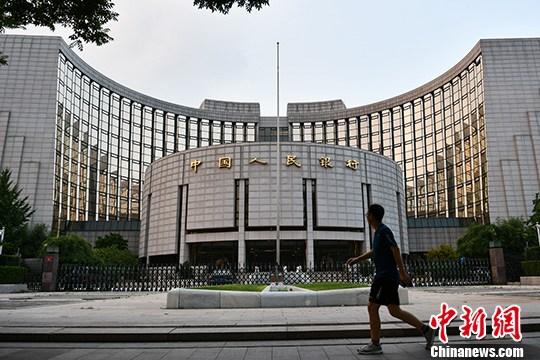Chinanews.com April 3rd The Central Bank decided to lower the target of small and medium-sized banks in April and cut the interest rate of excess deposits of financial institutions in the central bank. A relevant official of the central bank said that the targeted RRR cut will release about 400 billion yuan of long-term funds, effectively increasing the stable funding sources for small and medium banks to support the real economy, which will help promote the reduction of the actual interest rate of loans of small and micro enterprises and private enterprises, and directly support the real economy.
Data map: People's Bank of China. Photo by Zhang Xinlong of China News Agency
A person in charge of the central bank pointed out that the targeted RRR cut will release about 400 billion yuan of long-term funds. On average, each small and medium-sized bank can obtain about 100 million yuan of long-term funds, effectively increasing the stable funding sources of small and medium-sized banks to support the real economy, and reducing banks. The cost of capital is about 6 billion yuan a year. It is beneficial to reduce the actual interest rate of loans of small and micro enterprises and private enterprises through bank transmission and directly support the real economy.
The targeted RRR cut will be implemented twice on April 15 and May 15 to prevent excessive liquidity deposits caused by one-off releases, and ensure that all the funds obtained by the RRR cut will be invested in small, medium and micro enterprises at a lower interest rate. After this reduction, more than 4,000 small and medium deposit financial institutions (including rural credit cooperatives, rural commercial banks, rural cooperative banks, rural banks, finance companies, financial leasing companies, and auto finance companies, etc.) From the perspective of Chinese history and the situation of developing countries, the reserve reserve ratio of 6% is relatively low.
Why did the targeted target decrease this time choose small and medium banks? The person in charge said that this targeted reduction is targeted at small and medium-sized banks, including two types of institutions, one is rural financial institutions such as rural credit cooperatives, rural commercial banks, rural cooperative banks, and village and town banks, and the other is only at the provincial administrative area. City commercial banks operating within. There are nearly 4,000 small and medium-sized banks that receive targeted downgrade funding. The number of households in the banking system is 99%. They are numerous and widely distributed. They are based on the local and rooted grassroots and are an important force for serving small, medium and micro enterprises.
The person in charge pointed out that further reducing the deposit reserve ratio of small and medium-sized banks will increase the financial strength of small and medium-sized banks and help guide them to issue loans to small and medium-sized enterprises at a more favorable interest rate, expanding agriculture-related, foreign trade, and industries affected by the epidemic. To increase the support for the recovery and development of the real economy.
In response to the central bank's reduction of the excess reserve interest rate, the person in charge responded that excess reserves are deposit-type financial institutions' voluntary deposits in the central bank after paying the statutory reserve, which is at the discretion of the bank and can be used at any time for liquidation, cash withdrawal, etc. need.
The People's Bank of China pays interest on excess reserves, and its interest rate is the excess reserve interest rate. It has not been adjusted since 2008 when it was reduced from 0.99% to 0.72%. This time the central bank cut the excess reserve interest rate from 0.72% to 0.35%, which can promote banks to improve the efficiency of capital use, and promote banks to better serve the real economy, especially small and medium-sized enterprises.

